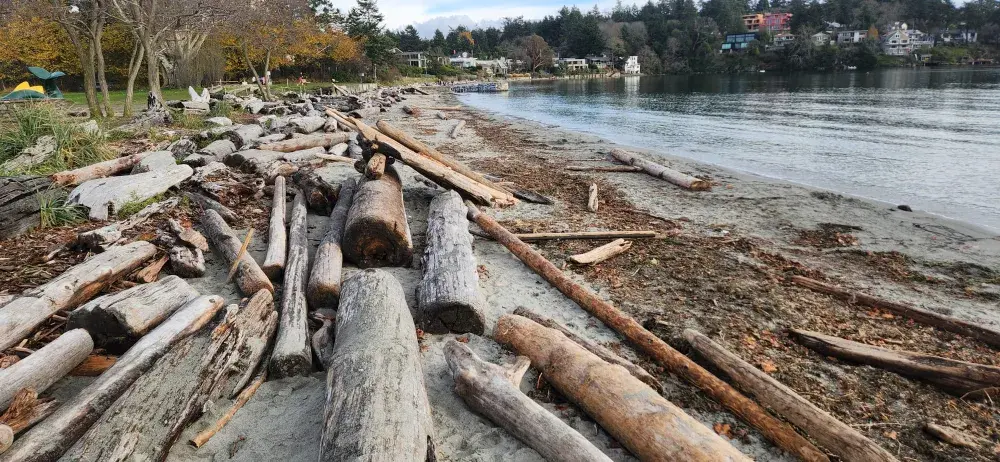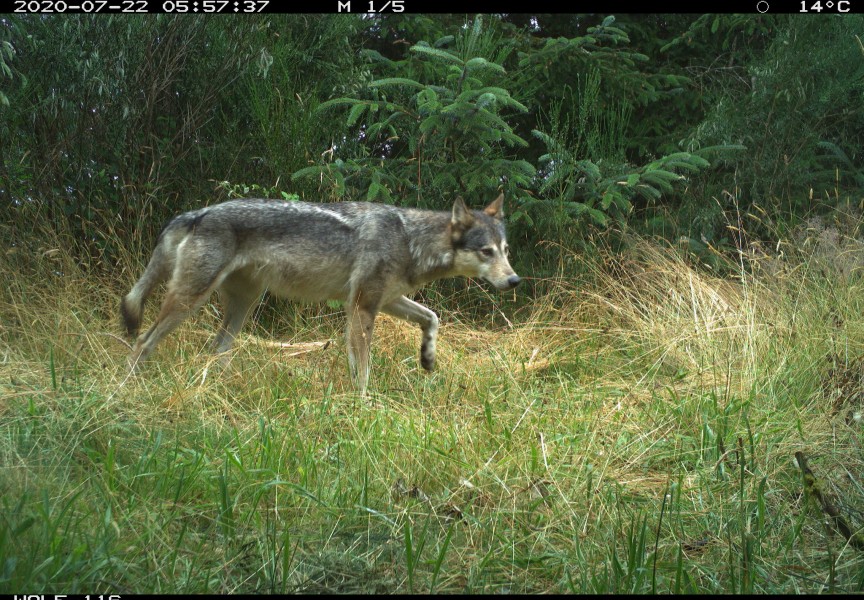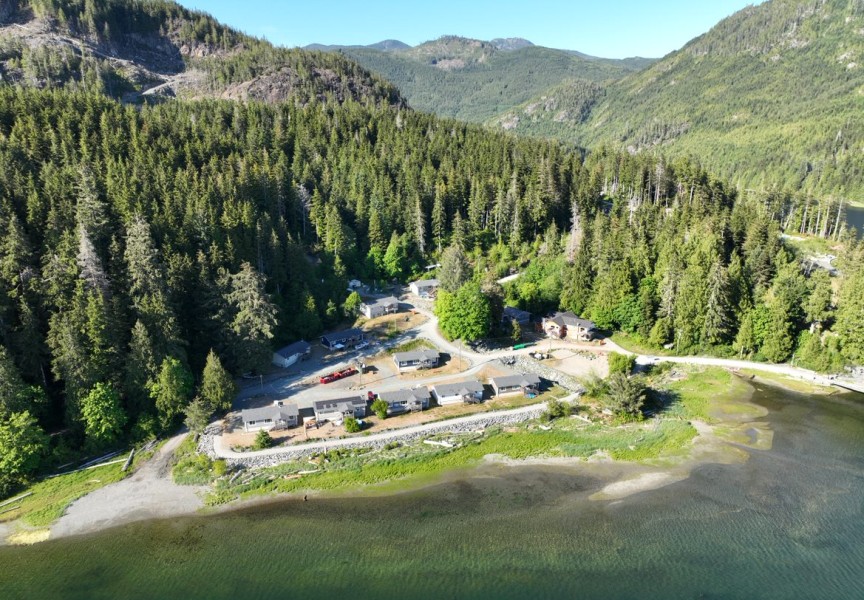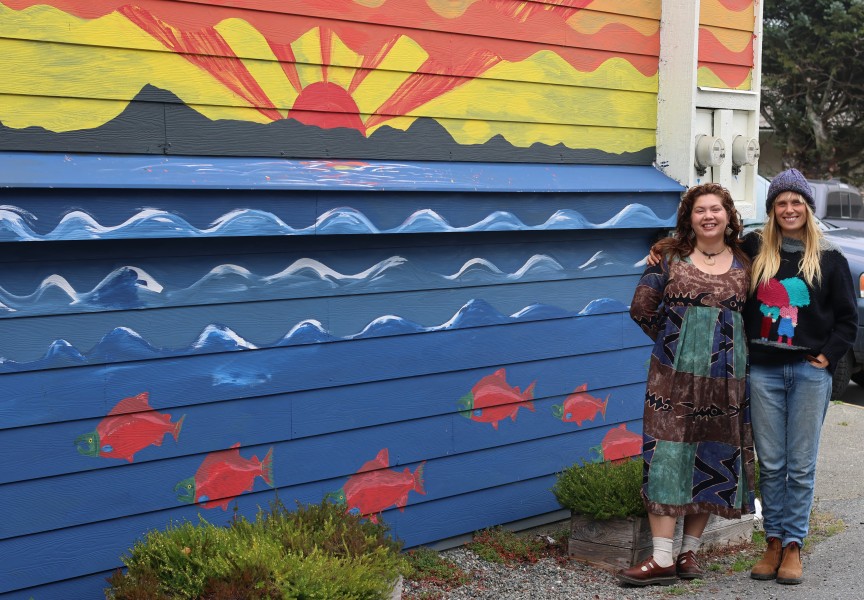Logs and branches that wash ashore, known as drift logs, are a common sight along the coast of Western Canada. Often used as natural benches and firewood, it’s easy to accept them as part of the scenery.
However, a recent study published by UVic biologist Dr. Tom Reimchen and two of his students, Esteban Pérez Andresen and Melanie Marchant, reveals that drift logs are a significant cause of the destruction of intertidal ecosystems over the coasts of Vancouver Island and Haida Gwaii.
“These logs that are on the beach, many of them are brought into motion again, and they are dragged off the shore by the waves. Then they drift and they’re dragged in,” said Reimchen. “These logs abrade over the [rocky shores] like sandpaper, back and forth. So, all those things that create so much diversity on shore, like barnacles and mollusks, get eliminated.”
The research revealed that up to 80 per cent of the barnacle and mollusk population, key intertidal foundation species, are extensively degraded due to constant abrasion from logs in their rocky-shore habitat.
The first portion of data gathering involved using Google Earth to view satellite images of the coasts of Vancouver Island and Haida Gwaii, where Pérez Andresen recorded the number of logs on beaches over the course of a decade, starting in 2016. As the pictures were not taken for that purpose, the low resolution resulted in the loss of most of the data from earlier years.
Another part of the study involved using photos from the BC archives of the first settlements on Lake River Island to count the number of logs along the coast. The result showed an 800- per-cent increase in drift logs on beaches since the 1850s, as more logs from natural and human sources accumulated over time.
After satellite data collection, the team visited the local island to observe the damage. During their observation, the team divided the rocky shores into three areas to analyze how much abrasion drift logs occasioned. The lower part, usually covered by water except on extreme low tide, was covered by barnacles. However, the middle part was utterly devoid of barnacles, and the upper part had them only in crevices.
Around 90 per cent of drift logs remobilize during winter storms, breaking into smaller pieces as waves break them. Looking inside the crevices, where barnacles are usually protected from the bigger logs, the team found smaller pieces of logs destroying the organisms within.
Migratory birds like shorebirds, small fish that live in tides, and forest animals like raccoons and bears all rely on this ecosystem as a source of food. In the case of shorebirds, the degradation of the intertidal ecosystems contributes to a population decline of 5 to 20 per cent.
“Barnacles are a foundation species, aside from being themselves food for other organisms for the higher parts of the food chain. They host a lot of different organisms and invertebrates,” said Pérez Andresen. “They are kind of like trees, it’s a micro habitat where they protect a lot of invertebrates. . . when they get destroyed [so do those] all little things.”
From the 22 shores of Southern Vancouver, the study classified 497 drift logs by source. Eighty-five logs (17 per cent) were identified as natural origin, and 118 (23.7 per cent) were ambiguous due to the erosion on both sides of the logs and the absence of root systems. However, 294 (59.2 per cent) were classified as sawcut, with cut ends and lacking a root system, indicating their human origin.
Dr. Reimchen mentioned that a way to reduce the amount of drift logs in the future is to make it more expensive for logging companies or transportation companies to lose logs. Opening dialogue with policymakers to reduce log loss would be another way to reduce drift logs in the future.
“Timber is so valuable right now, and there must be a sort of economic incentive to make sure this doesn’t happen or it is greatly reduced,” said Dr. Reimchen. “[The Ministry of Forest] would be a better source of insight on what [to do] as to being recognized that this is a serious issue that wasn’t recognized before. Maybe that will facilitate attention to the issue, and they might be able to provide real [solutions].”
While there is no clear next step, both Dr. Reimchen and Pérez Andresen are drawing more public attention to the issue. More attention means better image quality, enabling more efficient log counting along the West Coast. Another way to reduce drift logs is to rehabilitate beaches by using them to stabilize soil in sandbags, thus reducing the number of logs within the ocean’s reach.
“The more people recognize this is an issue, the more if they complain, we can do something about this by talking to policymakers,” said Pérez Andresen.
To see the full research, published under Marine Ecology, please visit: https://onlinelibrary.wiley.com/doi/10.1111/maec.70054.








